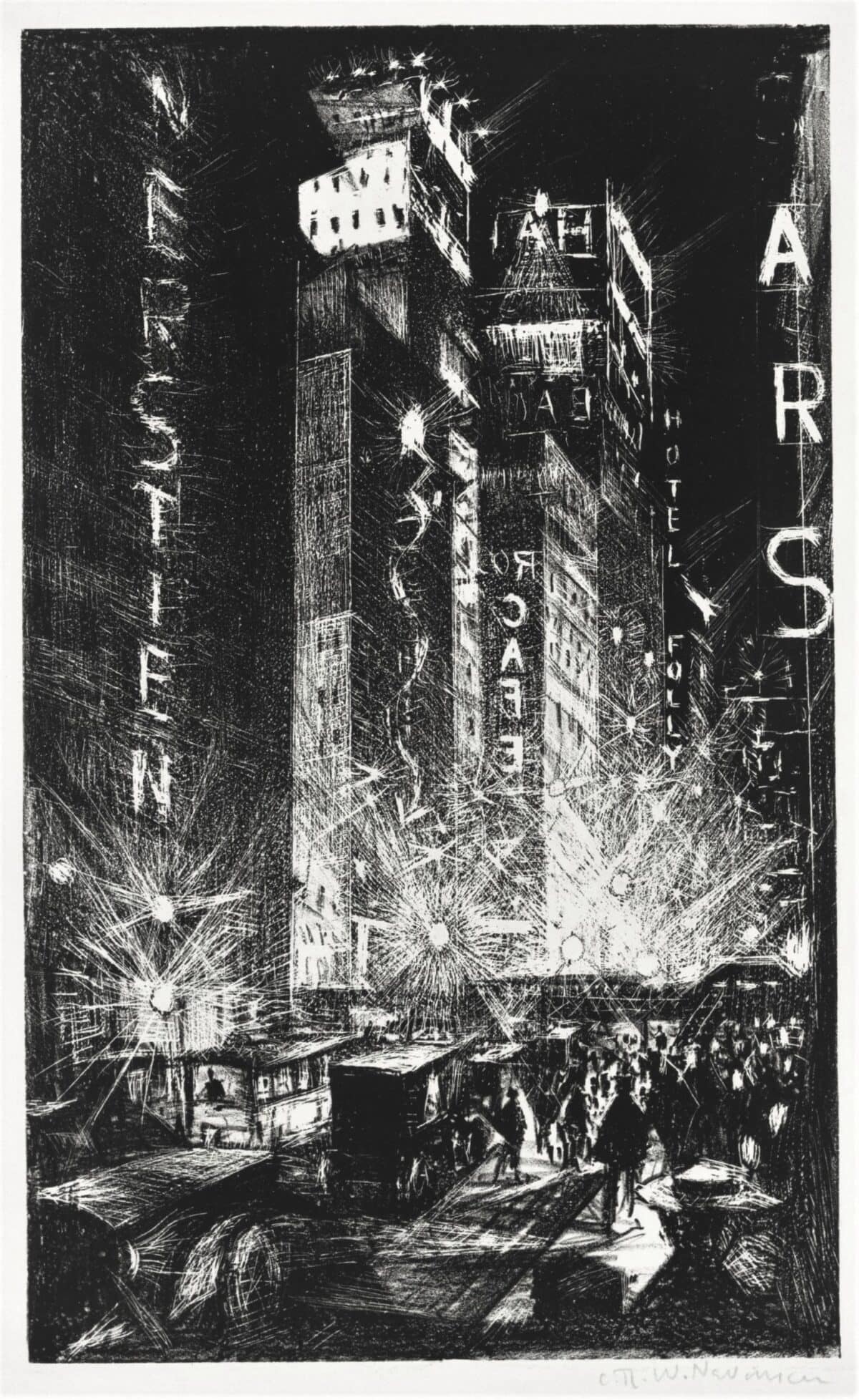NEVINSON, Christopher
British (1889-1946)
The Great White Way, 1920
Black 71. Lithograph on laid paper, with wide margins. Edition of 25. Signed in pencil.
19 ¾ x 12 inches | 50.1 x 30.6 cm
Selected as Collector’s Choice at the London Original Print Fair by Jonathan Bober, the Senior Curator of Prints and Drawings at the National Gallery of Art, Washington: “Nevinson’s The Great White Way (1920) conveys his wonder at the energies of Manhattan on the eve of its first vibrant era, as well as a satisfaction at the natural coincidence of his geometry with the city’s grid and canyons.”
Christopher Nevinson created a series of drypoints, mezzotints, and lithographs of New York in 1919 and 1920, inspired by the city’s dynamic modernity. This extremely rare nocturne is one of the finest, in which he captured the teeming masses and towering skyscrapers with stark black-and-white contrasts. Samantha Rippner wrote in Urban Life/Urban Dynamism, “[Nevinson] worked from dark to light, laying down broad planes of black ink to establish the basic structure of the composition and then scratching away areas with a scraper to create highlights that define the forms of the buildings and activate the electric signs.”
The 1920 print celebrates the spectacle of the theater district of New York City just before prohibition. The district earned the nickname The Great White Way because it was the first large section of street to shift from gas lamps to electric lighting in the entire country. Not only did this change bring bright lights and fanfare to the Broadway marquees but it helped change social customs, making it acceptable for solitary women to be out after dark in that area. The Great White Way in New York went dark only two times since its first illumination. The first time was during WWII and then again during the battle against the coronavirus.
Please contact the gallery for the price. (510) 654-7910



